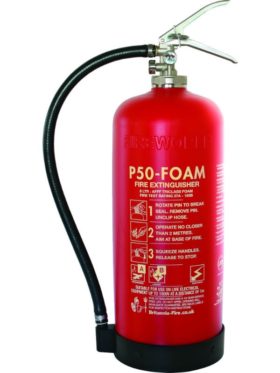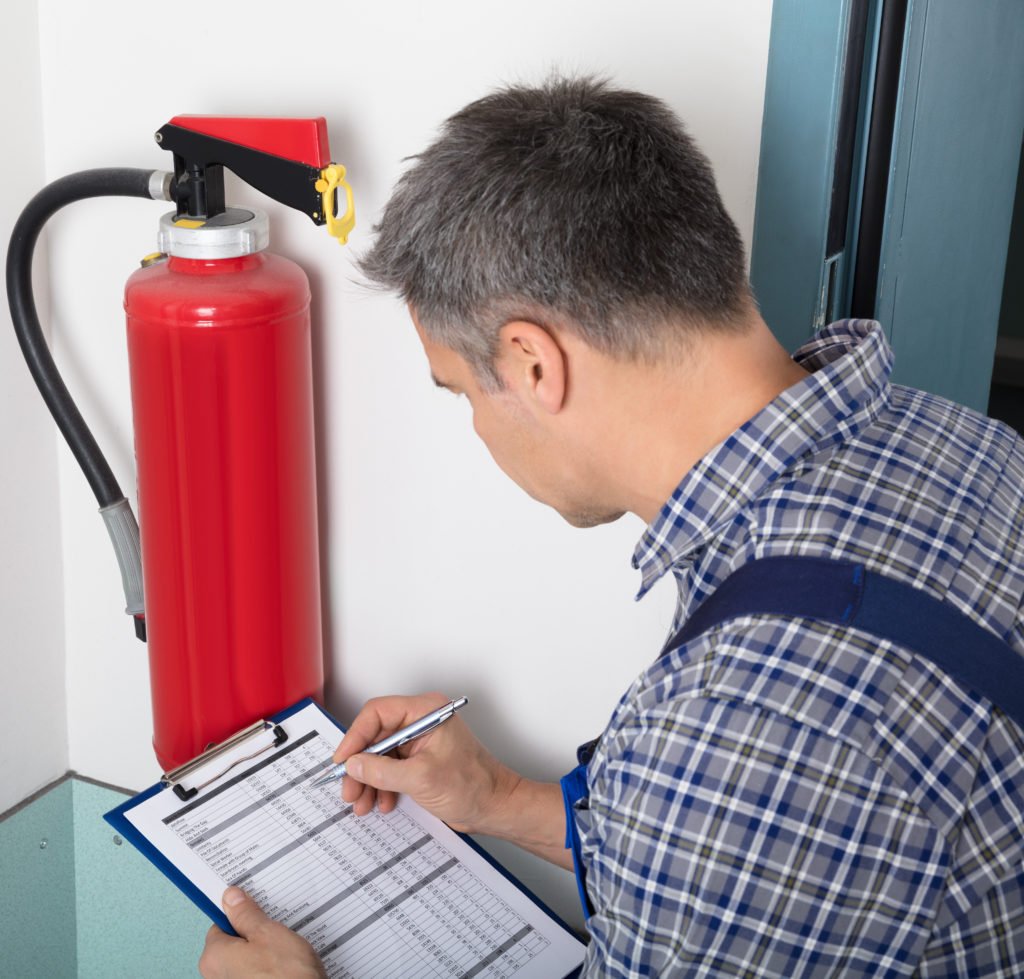The fire extinguisher market has changed substantially in recent years, with products becoming cheaper and the launch of ‘service free’ extinguishers.
Is it time to rethink your arrangements? What are the requirements and how much flexibility do you have?
Changing needs
The best practice recommendations on extinguisher servicing are described in BS5306-3:2009. (The BSi shop website confirms that it’s currently under review, which can only be a good thing given developments in the sector since 2009).
There’s also information within government guidance. While these documents are not legislation as such, should it all go wrong, they would be relied upon in court as evidence of expected practice to comply with the law.
These documents specify the following:
- A weekly check that extinguishers are in place and undamaged
- Visual inspections at least monthly, by the responsible person, to confirm the extinguisher is in place, unobstructed, visible, has operating instructions which are clean and legible, has not been operated, is undamaged, the pressure gauge or indicator (if fitted) shows it’s functional, and seals and tamper indicators are not missing
- Annual servicing by a competent person
While points one and two above can be carried out by almost anyone with basic instruction, number three is generally reserved for qualified technicians.
Annual servicing involves knowledge of different types of cylinders and their servicing needs under BS5306-3, knowledge of safe methods of work when working with pressure vessels, the use of specialist equipment and refill facilities, and more.
When looking for a company to carrying out a servicing contract you must ensure that they are competent. The best way to do this is to look for evidence that they are registered with BAFE under the SP101/ST104 scheme. If you wanted to train someone in-house to take on this task there are three day courses available.
This traditional route for annual servicing is the way to go if you have standard extinguishers (ie not the service-free type).
You should also use a competent contractor to commission your extinguishers (as recommended within BS5306-6).
The need for commissioning tends to rule out the idea of buying cheaper extinguishers directly from, for instance, internet suppliers, as you probably won’t have the qualifications to do it in-house. In practice, commissioning involves a full check equivalent to a basic service, proper installation and signage.


A new brand of extinguishers, ‘P50’, is being marketed as offering a new alternative to annual servicing contracts. The extinguishers come with three alternative contents at present: dry powder, aqueous film forming foam (AFFF) and wet chemical (used on oil/ fat fires). They:
- Have a 10-year warranty and 10 year’ ‘service-free’ life
- Come with a free refill offer if the pressure drops or its used on a real fire
- are made of non-corrosive materials so they’re good in tough environments where other extinguishers would rust
- are offered with commissioning and installation within the price
- AFFF and dry powder extinguishers don’t require emptying and refilling every five years (a requirement for most standard extinguishers)
They cost a bit more than standard extinguishers (a 6 litre AFFF including the installation is £130 plus VAT) but because of the savings they should make good financial sense.
However, before deciding whether to take this route you must be sure that you have the resources to carry out the annual check – it’s not difficult and can be carried out using the magnet provided to check the pressure gauges, a visual inspection and quick wipe. Instructions are given by the manufacturer.
One catch is that there are presently no carbon dioxide extinguishers in the range. This could mean that you have a small number of traditional extinguishers alongside your P50s, thus still requiring a service visit by a qualified technician, and losing at least some of the financial savings.
In conclusion
You’re unlikely to want to undertake servicing of standard extinguishers in-house unless you’re a very large operation that can justify the three-day course. Even then, you’ll need to oversee the quality of workmanship: this is a safety critical task and not worth cutting corners.
If you only require types of extinguisher which are available in the service-free range this could work for you. However in practice most businesses need some carbon dioxide extinguisher cover due to electrical equipment within their building. This being the case, you should weigh up the initial and annual costs carefully before making your decision.
As a final word of caution, don’t lose sight of the fact that extinguishers are present for use in a life-threatening emergency. This is not an area where cost savings should override other considerations.
2023 Fire Safety eBook – Grab your free copy!
Download the Fire Safety in 2023 eBook, keeping you up to date with the biggest news and prosecution stories from around the industry. Chapters include important updates such as the Fire Safety (England) Regulations 2022 and an overview of the new British Standard for the digital management of fire safety information.
Plus, we explore the growing risks of lithium-ion battery fires and hear from experts in disability evacuation and social housing.
